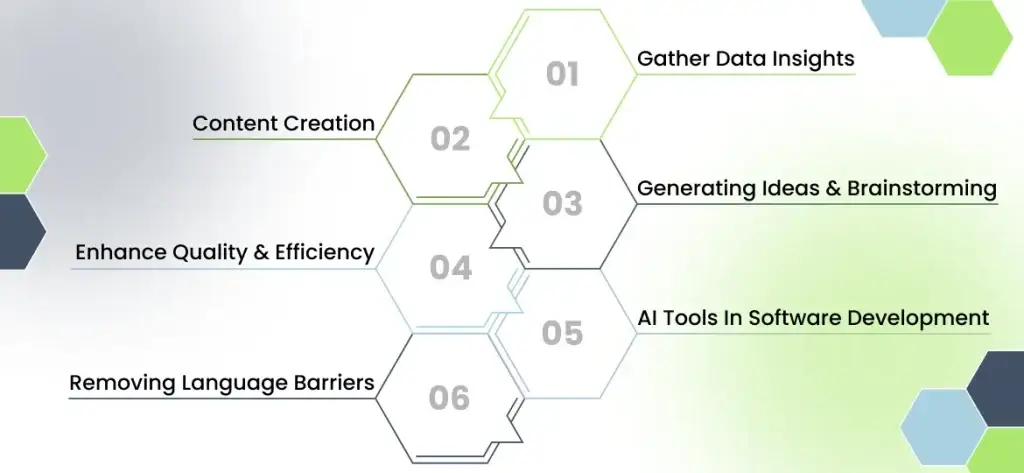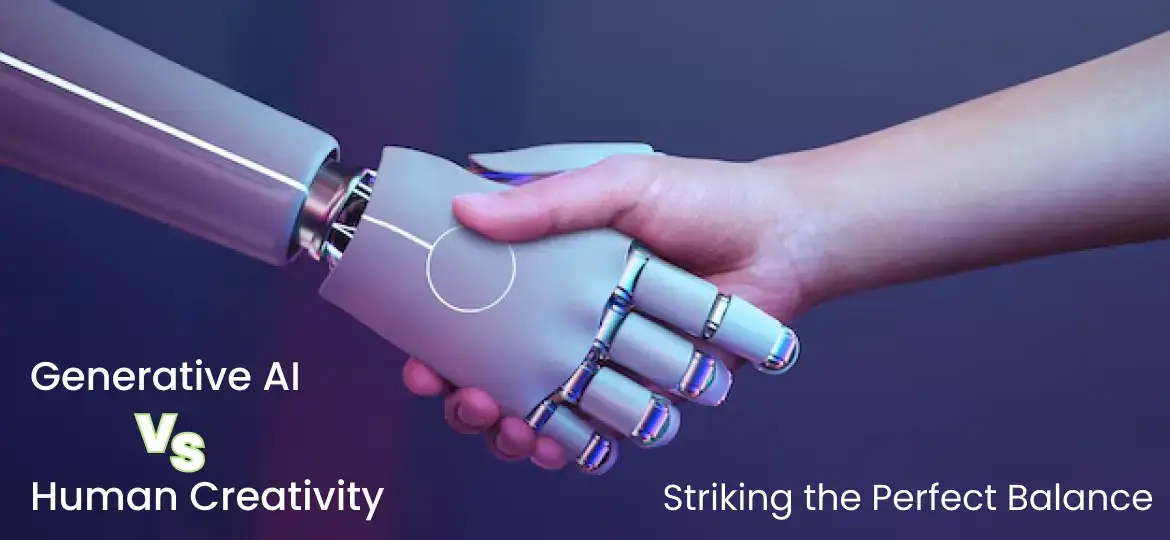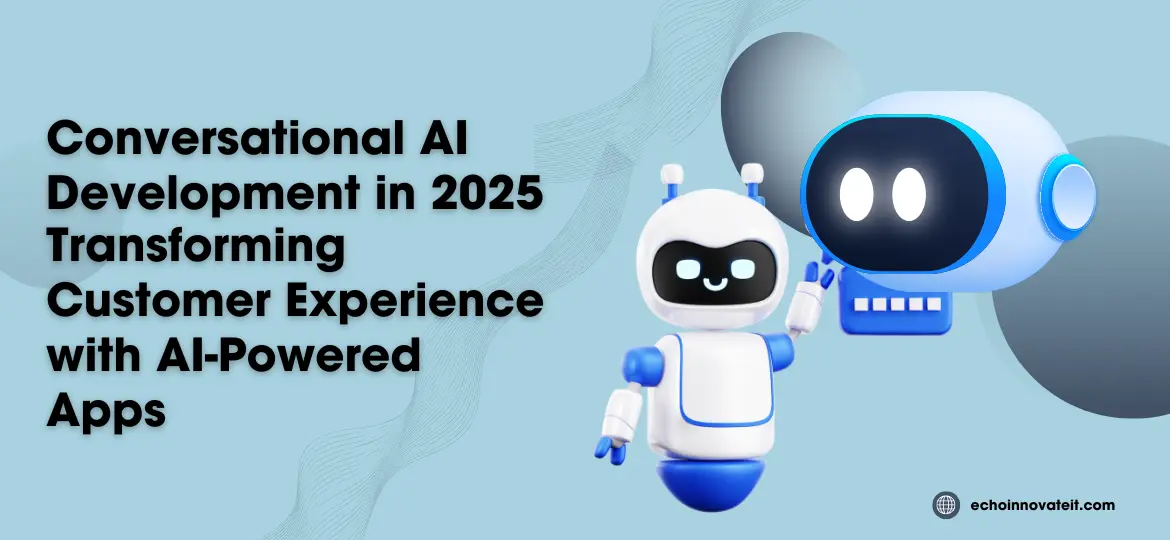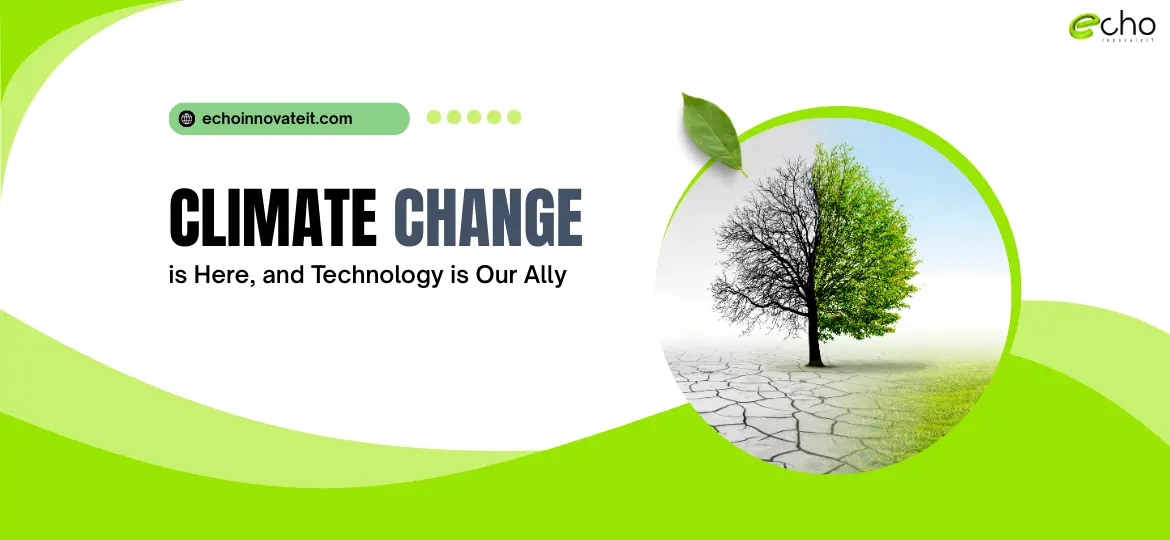Today, when we say AI can do anything, we mean it: providing novel ideas, generating content, drawing pictures, or even making music! Generative AI allows users to create new content from various inputs easily. These models can accept and output text, photos, sounds, animation, 3D models, and other sorts of data. Its foundation models allow organizations to perform multiple tasks at the same time. Some popular examples are ChatGPT, Bard, Artbreeder, etc.
When we talk about AI transformation and its impact on human creativity, which is basically driven by conceptual thinking, emotional expression, and artistic visions, we do fear the loss of originality, use of repetitive content, and over-dependence on generative AI tools. And that’s why many of us hear about people losing jobs because of AI. Because for industries, AI can do all kinds of traditional tasks in minutes.
It can write, design, and create graphics for companies, affecting the opportunities for artists, writers, musicians, and graphic designers. So, is generative AI a positive or negative approach? If negative, how can creative professionals secure their roles in the age of AI digital marketing? How can they strike a perfect balance and opt for a collaborative approach if positive?
Generative AI And Its Benefits
Generative AI is one of the latest tools for creative industries. It is a subset of artificial intelligence (AI) that focuses on creation rather than data processing. It exemplifies the constant progress of technology, affecting how we perceive and use AI capabilities. Because generative AI is trained on massive volumes of data, it can read what a user writes into an input field and give the desired result, thereby serving as a virtual assistant.
To develop a generative AI, researchers first collect a huge amount of data that needs to be taught to their AI. The collected data is then cleaned and made suitable for machine learning algorithms. This could include tasks like tokenization, vectorization, and data augmentation. After this, a proper machine learning model architecture is created. It includes neural networks like generators or discriminators.
The chosen model is trained using the prepared dataset. This entails feeding the model a vast amount of data and tweaking its internal parameters to reduce the disparity between the generated output and the actual data. The trained model’s performance is assessed using a different test dataset. Here are some of the realistic benefits of generative AI:
Innovation and Automation:
Content generation is one of the most common applications for generative AI among organizations. Marketing teams spend much time developing fresh content, such as marketing copy, blog entries, social media postings, and graphic design.
AI may produce original ideas, investigate unorthodox solutions, and push creative boundaries, providing people with new views.
AI tools can assist artists, writers, and designers overcome creative obstacles by proposing alternative techniques, producing variations, and recommending new directions.
Provide Personalized Experiences:
AI may produce personalized content recommendations, product suggestions, and marketing messages, improving user experiences and increasing customer engagement.
AI improves corporate processes by personalizing consumer interactions. AI may learn about your firm and its offerings. You can use generative AI to build tailored experiences when combined with client data.
Generative AI can produce customized products and services based on individual needs and preferences, increasing consumer satisfaction.
Reduces Human Workload:
AI helps to streamline corporate procedures. If you can discover places where you can automate tasks and use AI to generate data, you can minimize your staff’s workloads and accomplish more each day. Many tools allow you to enter text reports into the AI text generator and generate summaries.
Improves Cybersecurity:
Generative AI can help firms improve their cybersecurity. Companies must evaluate enormous amounts of data to identify threats that AI systems may assist with. AI assists you by analyzing data and identifying patterns of activity that deviate from the norm. If something doesn’t look right, AI can alert your team to a potential issue and frequently address it in real-time.
Analyze Latest Market Trends:
AI can assist you by evaluating vast amounts of data. AI models use deep learning techniques to spot market trends and assess other market elements, allowing businesses to be more confident in their judgments and reduce risk.
Once you’ve identified where clients’ preferences are evolving, apply AI to generate suggestions. Input some of the new difficulties that consumers experience, as well as potential solutions and improvements to your current items that will make them more appealing in the new market environment.
AI Creativity vs Human Creativity: Understanding the Clear Differences
AI can process massive quantities of data and provide sophisticated results, yet human creativity is motivated by emotions and experiences that no machine can imitate. Understanding AI and human creativity is essential for comparing and contrasting the two and determining which will prevail.
While AI lacks emotional intelligence, humans do not produce creative content as quickly as AI. However, humans can think beyond the box and create ideas based on intuition and personal experiences, resulting in creativity and advancement. Let us understand both of them by making a simple comparison.
| Factors | AI Creativity | Human Creativity |
|---|---|---|
| Source | Algorithms, data, and patterns | Emotions, experiences, imagination, intuition |
| Nature | Rule-based and algorithmic | Intuitive, spontaneous, subjective |
| Output | Novel combinations and variations | Original ideas, unique perspectives, emotional expression |
| Strengths | Speed, efficiency, data analysis with great possibilities | Emotional depth, empathy, critical thinking, problem solving, and cultural awareness |
| Limitations | Lack of genuine emotion, reliance on existing data, potential for bias, difficulty with abstract concepts | Limited by physical and mental restrictions, prone to prejudices, vulnerable to emotional barriers |
| Role | Tool for exploration, idea generation, automation | Driver of innovation, expression of personality, and cultural growth |
How Generative AI Impacts Creativity?
As we discussed in the beginning of this blog, generative AI has become a debatable topic with its overshadowing impact on humans and creative processing. Let’s learn some of the pros and cons of generative AI in context of human creativity:
As we discussed at the beginning of this blog, generative AI has become a debatable topic with its overshadowing impact on humans and creative processing. Let’s learn some of the pros and cons of generative AI in the context of human creativity:
Pros of Generative AI
- Perform tasks requiring human intelligence, such as problem-solving, language comprehension, and decision-making.
- AI tools can assist artists, writers, and designers overcome creative obstacles by proposing alternative techniques, producing variations, and recommending new directions.
- AI tools can assist artists, writers, and designers overcome creative obstacles by proposing alternative techniques, producing variations, and recommending new directions.
- AI can help people with disabilities by creating alternate modes of communication like text-to-speech and image description.
- AI can drastically speed up content creation processes, allowing organizations to generate high-quality material more rapidly and efficiently.
Cons of Generative AI
- AI lacks people’s emotional intelligence, which can aid decision-making processes that need empathy and intuition.
- AI models are trained on vast datasets of current works, which might lead to an over-reliance on established patterns and styles, potentially suffocating originality and limiting the exploration of new ideas.
- AI cannot feel emotions or form human connections, which are frequently catalysts for creativity.
- AI models can reflect and exacerbate biases in training data, potentially resulting in unfair or discriminating outputs.
- As AI advances, there may be concerns about job displacement among artists, musicians, and other creative people.
How AI And Human Creativity Can Work Together

Despite the AI revolution, human ingenuity remains an invaluable asset. While machines are great at analyzing large amounts of data and spotting patterns, they cannot produce original ideas, think beyond the box, or infuse their work with emotional depth and personal meaning.
Rather than viewing AI as a danger to human brilliance, forward-thinking leaders must investigate methods to use technology to augment and amplify human capabilities.
The rise of human-AI collaboration is altering industries and creating previously imagined possibilities. Let’s understand how and in what ways AI and human creativity can work and strike a perfect balance together:
Content Creation
In content creation, AI can help produce content outlines, fact-check, and suggest modifications, allowing producers to produce high-quality material more efficiently. Contrary to popular belief, collaboration between humans and AI enhances innovation in various disciplines.
Artificial intelligence systems may produce ideas, offer changes, and create artistic content. However, the human touch brings the ultimate layer of creativity, intuition, and emotional connection to these products.
Gather Data Insights
AI systems can analyze large amounts of user data to uncover developing trends, client preferences, and unfulfilled needs. With these insights, human designers can devote their creative talents to generating unique solutions that address their target audience’s complex desires and goals.
Human creators can use AI’s data-driven intelligence to make more informed decisions, iterate more quickly, and ultimately arrive at functionally efficient and emotionally resonant solutions.
Generating Ideas & Brainstorming
Traditional brainstorming sessions rely on human participants to produce ideas, but artificial intelligence (AI) can help facilitate and improve this process. AI-powered tools can assist users in exploring different views, generating fresh ideas, and predicting probable outcomes. Teams can achieve unprecedented levels of invention and produce game-changing solutions by combining human creativity with AI’s analytical capabilities.
For writers, artists, and musicians, interacting with AI can offer new channels for creative inquiry, generating thoughts and concepts that might otherwise go unexplored. Humans can use AI as a creative collaborator to push the bounds of their imagination and create works beyond individual human cognition’s constraints.
Enhance Quality & Efficiency
AI systems can be intelligent assistants, offering humans real-time information, analysis, and recommendations. This enables people to make better decisions and do things more effectively. AI can help create content outlines, fact-check, and even recommend modifications, allowing authors to produce high-quality material more efficiently.
AI Tools In Software Development
AI-powered solutions can automate repetitive processes such as code generation, testing, and debugging, allowing developers to concentrate on more difficult and creative areas of the development process.
AI technologies may evaluate code for potential flaws, security vulnerabilities, and performance concerns, assisting developers in identifying and resolving issues early in the development cycle. AI can help guarantee that code follows best practices, making it easier to maintain and upgrade.
Removing Language Barriers
AI-powered language translation systems are currently being developed. Initially, these computers generated grammatically correct translations but lacked nuance and context.
Human linguists and translators contributed their knowledge by assessing and improving the output of the AI algorithms.
This ongoing feedback and improvement process has created increasingly accurate and contextually relevant translation systems.
Conclusion
Concluding today’s blog on generative AI and human creativity, we all agree that finding a perfect balance or space where both can work or coexist is necessary. AI consultants can develop campaigns that resonate profoundly with their target audience by leveraging AI for data-driven insights and automation and human creativity for emotional connection, cultural sensitivity, and innovation.
Finally, the future of employment will go to those who can harness the potential of AI while never losing sight of the priceless value of human creativity, empathy, and imagination. This delicate balance allows us to design a course for a more inventive, rewarding, and purpose-driven future of work.
Want to promote AI strategy in your team and boost your organization with generative AI? Hire our team and learn how we can help you discover new opportunities with our full-fledged AI consulting services!



